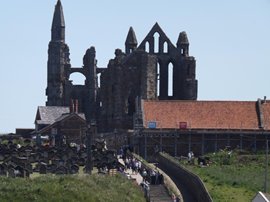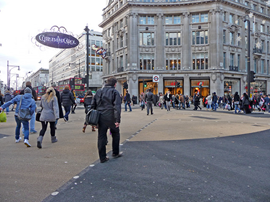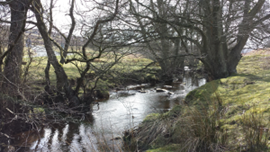Practical Building Conservation: Conservation Basics
Practical Building Conservation: Conservation Basics, Volume editor Iain McCaig, Historic England, Ashgate Publishing, 2013, 396 pages hardback.
Practical Building Conservation: Concrete, Volume editor David Odgers, Historic England, Ashgate Publishing, 2013, 320 pages hardback.
These two volumes are part of the practical building conservation series commissioned by English Heritage and overseen by their Building Conservation Research Team (now part of Historic England). The series has drawn on the experience of Historic England specialists and independent consultants within each specific field. Each volume has two editors, both specialists in their field, and additional principal contributors.
The series, aimed at conservation practitioners and students, would be of interest to all professions involved in the repair, maintenance and management of historic buildings and structures. The books are clearly set out and generously illustrated in colour, and would also likely appeal to building owners and non-professionals with an interest in historic buildings. Other titles in the series include Building Environment; Earth, Brick and Terracotta; Glass and Glazing; Metals; Mortars, Renders and Plasters; and Roofing, Stone and Timber.
Conservation Basics forms the principal and overarching book to the series. It introduces the concept of building conservation; current law, policy and guidance; survey and investigation methods; ecological considerations; managing maintenance and repair; and emergency planning for heritage buildings and collections. A bibliography, glossary and case studies are included.
Of all the volumes in the series, this book stands alone as a general introduction to building conservation. It should be an essential reference to students and practitioners even if they do not use any of the other more specialist books in the series. The book methodically covers all the general information required to understand and manage the conservation of historic buildings. Richly illustrated, it includes highly practical templates for maintenance and cyclical inspection of historic buildings. I find the chapter on the evolving concept of building conservation particularly fascinating. It is set out as an illustrated timeline leading from the 16th century up to the present, setting out landmark events and the evolution of the legislative framework. As a heritage practitioner, if I had a choice of any of the books in this series I would start with this one.
The volume on concrete is naturally more focused. Concrete is not a material commonly associated with historic building conservation but there are numerous listed buildings and cultural landmarks constructed from the material which now require preservation. Known for its strength and versatility, concrete can suffer from gradual and catastrophic failure, especially as a structural component. Early experimental formulations and vulnerable reinforcing techniques have led to challenges in maintaining and repairing this revolutionary material. This volume covers the development and use of concrete; deterioration and damage; assessment; treatment and repair; case studies; and care and maintenance. A bibliography and glossary are included.
Concrete seems to have been tainted by enduring public perception as an anti-social material fit only for engineering works. The use of concrete, however, is far older and diverse than commonly understood. I found the chapter on history, design and use of concrete to be particularly fascinating and informative. Even the most seasoned architectural historians would no doubt be surprised by some of the more unexpected examples of concrete buildings featured. The book firmly establishes the credentials of concrete as a material worthy of preservation in many historic structures. The techniques and philosophy of concrete repair in relation to heritage assets is an evolving subject. The book explains the pitfalls of some previous repair methods and provides a number of detailed case studies of successful repairs in diverse situations using the latest technology. A series of matrices is provided to aid analysis of faults and repair strategies.
Like all the books in the series, this volume is very well researched and illustrated, and contains clearly explained case studies. This would be an invaluable source book for any building conservation practitioner or curator who deals with or is responsible for concrete structures. This specialist area of building conservation will no doubt prove to become increasingly prominent as time passes.
This article originally appeared as ‘Basic and concrete’ in Context 140, published by the Institute of Historic Building Conservation (IHBC) in July 2015. It was written by Julian Bagg, a director of Castle House Heritage Consulting and a member of the IHBC technical panel.
--Institute of Historic Building Conservation
Related articles on Designing Buildings
IHBC NewsBlog
Notre-Dame Cathedral of Paris reopening: 7-8 December
The reopening is in time for Christmas 2025.
Stirling Prize-winning Salford building to be demolished
The Centenary Building will be bulldozed as part of the wider £2.5bn Crescent regeneration project
Volunteers work to transform 100-year-old ‘hidden’ building into bothy
The building, named Druimnashallag, is located southeast of Oban.
The new ‘Arches for HERs’ Demo site, from the Getty Conservation Institute via HE
It shows how organisations responsible for historic environment records (HER) management can benefit from its powerful features.
ICOMOS-CIF 2024 Symposium celebrates 40th anniversary in Venice
It aims to critically review current practices and theories of conservation of built heritage around the world, and more.
HES establishes new national centre for retrofit of traditional buildings
HES plans to develop the centre follows £1m of funding from UKRI Arts and Humanities Research Council.
High Court rejects oral appeal against tower block decision in historic Bloomsbury
The request was for a full Judicial Review hearing against Camden Council’s approval of a 74m-high tower block in Bloomsbury.
Mayor of London and Government announce bold plans to transform Oxford Street
Plans include turning the road into a traffic-free pedestrianised avenue, creating a beautiful public space.
Crystal Palace Subway, for 160th anniversary
The remarkable Grade II* listed Crystal Palace Subway in South London begins a new era following major restoration.
National Trust brings nature back to an area twice the size of Manchester in less than a decade
The National Trust has achieved its aim of creating or restoring 25,000 hectares of priority habitat on its land by 2025.
















